Luftwaffe Paratrooper Badge, by C. E. Juncker (in brass & zinc)
CATEGORY: Version
SKU: 01.GTR.0707.101.04.002
Estimated market value:
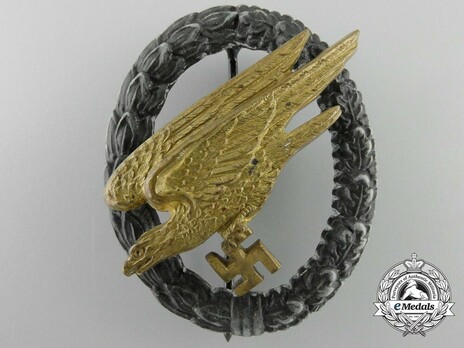
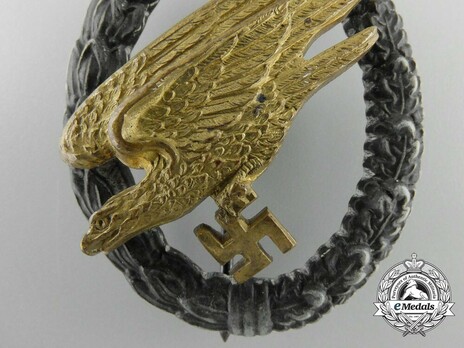
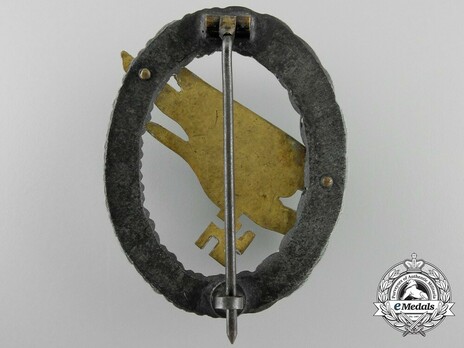
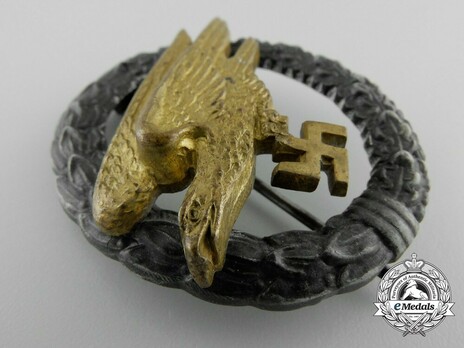
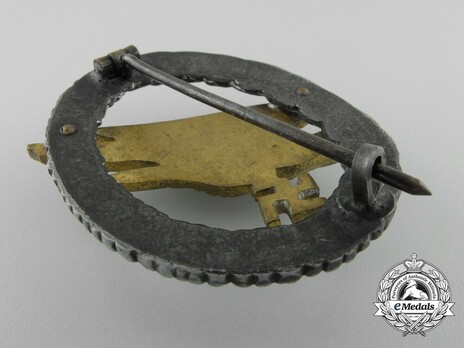
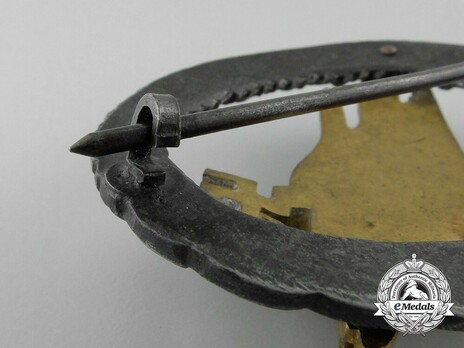
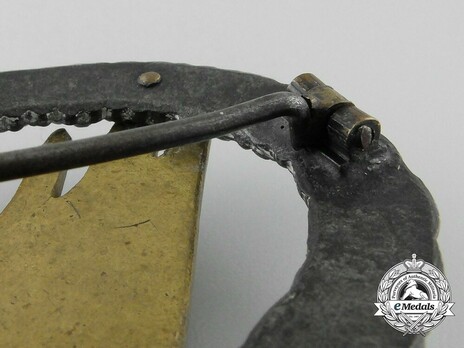
Estimated market value:
Unmarked however exhibiting the manufacturing characteristics of C.E. Juncker (type F), with darkened zinc wreath, gilded tombac eagle, 42.9x53.32mm, weighs 34.8 grams, very good quality, extremely fine.
The Luftwaffe Paratrooper Badge was instituted by Hermann Göring on November 5, 1936. It is a qualification badge that was awarded for those that successfully passed the tests to become a paratrooper. In order to do that, a soldier had to have six confirmed parachute jumps to his name.
Later regulations state that officially every owner of a Paratrooper Badge had to repeat this feat inside every 12 months period, otherwise they were to return their badge. However, there is no evidence that this was actually enforced. In fact, in the later years of the war the Luftwaffe Paratrooper Badge could be awarded to any soldier that was part of a paratrooper unit, even those that did not receive parachutist training, but were merely assigned to the unit as a medic or driver.
The initial regulations stated that the wreath of the badge was to be made of oxidized Neusilber. Neusilber, also known as nickel silver, is an alloy of brass and nickel, and does not in fact contain actual silver. Oxidizing nickel silver darkens it and gives it an antique look. The eagle was to be made of gilded brass.
In September of 1937, this was changed. Now, the entire badge was to be made of aluminum, with the wreath still in an antique silver look and the eagle still gilded. Some companies also experimented with cupal, which is not an alloy, but a composite material of an aluminum base with a thin copper plating.
With material shortages worsening as the war went on, by 1942 most badges were now made from a lower quality and abundant material, zinc.
Since most companies produced a plethora of different variants and variations, not necessarily all of them can and will be displayed here.
C. E. Juncker was the earliest producer of several of the Luftwaffe badges, including the Paratrooper Badge. Badges by this maker are of high quality and ubiquitous.
Initially, the company used brass. There are two known Juncker eagle patterns, the first of which was used only for a short time. The differences between the eagle designs are numerous, but the most obvious ones are the cut-outs between the wings and tail. The wreath was thinner in the beginning, with a thicker model introduced not long after, when materials used started to change.
After switching to aluminum for a short time, Juncker started using nickel silver for the wreath and brass for the eagle. This pairing of materials results in the most common version among the Juncker made badges found today.
Eventually, like all makers, Juncker switched to zinc. Early badges are always maker marked, however, the maker mark fell out of use with the introduction of zinc badges. Rarely a badge of the pre-zinc era will also be missing the maker mark.

Comments
Sign in to comment and reply.


Scroll Top